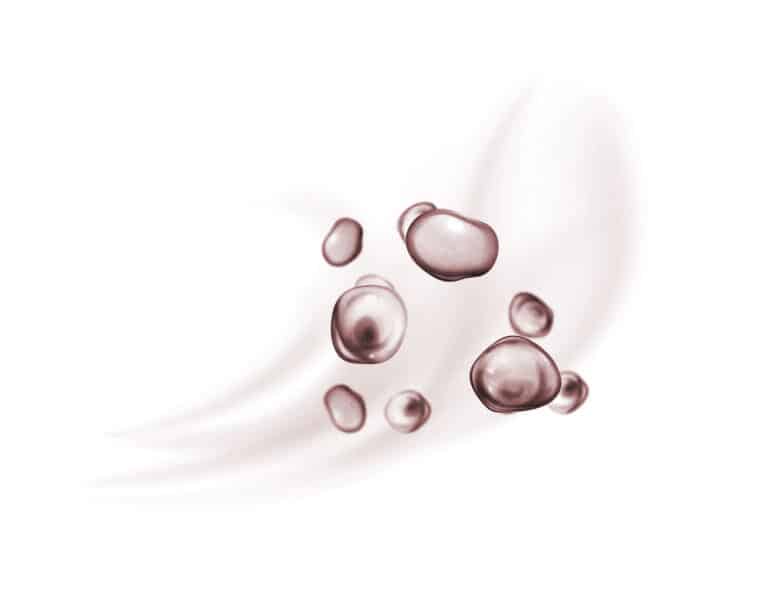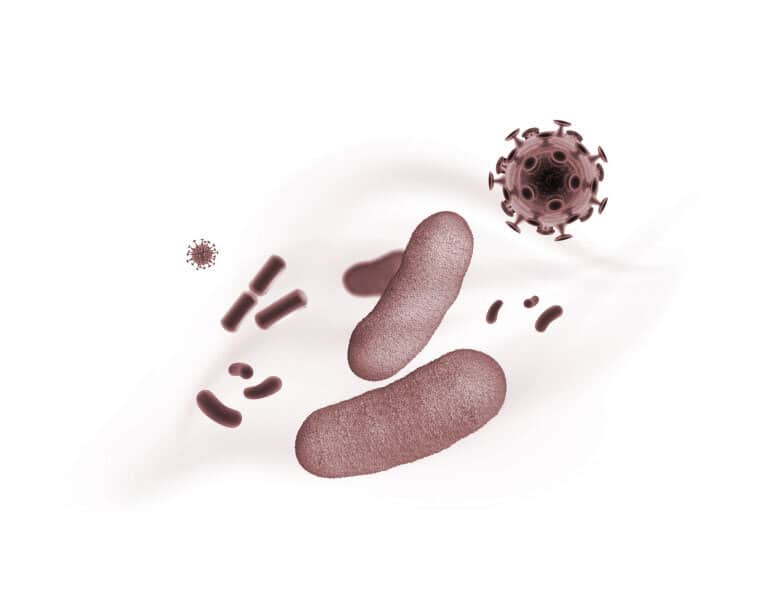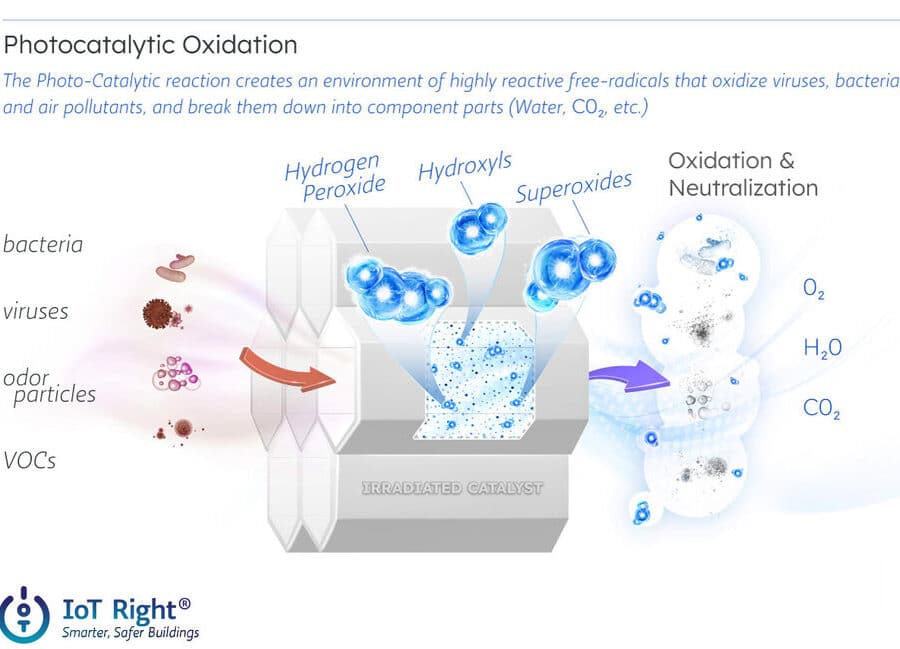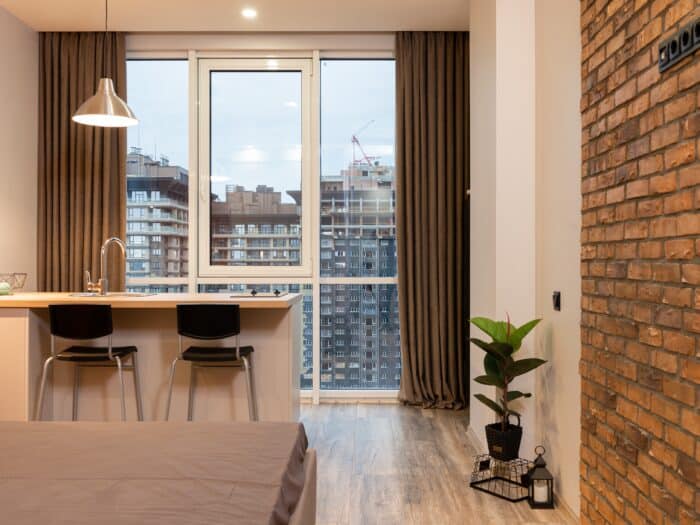With the pandemic having taken the world by storm, the term IAQ or “Indoor Air Quality” has become a much more familiar term to many – certainly for those in the HVAC and facilities management lines of work. Up until this point, many of us did not give much thought to the quality of air in the buildings that we enter but rather took it for granted that it was good. However, COVID-19 has changed that, bringing to the forefront the many questions that surround the topic, including just what constitutes good IAQ in your building versus bad and how does one make improvements to move from the latter to the former. Overall, there is some very promising work being done that will have a positive impact on the quality of the air that many of us breathe. However, not all “solutions” to IAQ problems are equal by any means and many people are rushing forward with subpar systems and methods that come with significant costs, both upfront and recurring. Simply put, COVID-19 has changed everything and many of the devices, systems, and methods that are being offered in response to address concerns with indoor air quality are suboptimal at best and do not have the big picture in mind. For example, the simple idea of just maximizing your outdoor air intake to your HVAC system completely ignores the reality that by doing so you are going to increase your operational costs significantly given that you will now be expending energy to condition that air, all the while expelling the conditioned air to the outdoors. At the same time, very little, if any, consideration is being given to the quality of the outdoor air that is being pulled into the building to confirm that it is indeed of better quality than the indoor air that it is replacing. The focus, in this case, has solely become expelling airborne pathogens while other air quality issues are being ignored. Moreover, increasing the level of filtration in your HVAC system by moving up to higher level MERV filters results in higher energy and equipment costs as the system has to work much harder to push the air through these filters thereby shortening the lifetime of the equipment, including fan motors, belts, etc. And that is in addition to the increased cost of the filters themselves as you are now replacing more expensive filters more frequently… a double whammy. At this point you might be asking, “So what is the good news and positive progress?”
In order to identify a good solution to your IAQ problems, you first need to understand the importance of air quality as well as the components that make air quality bad and the cause of such problems. As a recognized authority on the topic of indoor environment, ASHRAE (American Society of Heating, Refrigerating and Air-Conditioning Engineers) states the overall issue of IAQ as follows in their document entitled “ASHRAE Position Document on Indoor Air Quality”:
“Indoor air is the dominant pathway for exposure to airborne contaminants given that people spend the majority of their time indoors, and indoor air commonly contains numerous contaminants originating from both indoor and outdoor sources. Many of the contaminants impact health, comfort, well-being, learning outcomes and work performance. It is important that IAQ is considered in the design, construction and operation of buildings and HVAC systems.” 1
– ashrae.org
While there is no standard definition of “good IAQ” it can generally be defined as indoor air that is clean, clear and free from pollutants. Such pollutants might include:
- Particulate Matter (i.e. Smoke, Dust, Smog, Pollen, etc)
- Volatile Organic Compounds (VOC)
- Pathogens such as Bacteria, Mold and Viruses
In addition, while we might not call CO₂ a pollutant (this is actually under debate), there is no doubt that high levels are unhealthy, have adverse effects on human performance and thus result in lower indoor air quality. COVID-19 brought about somewhat of a focus shift in IAQ with viruses becoming the center of attention whereas previously this was the component of poor air quality that seemed to receive the least focus. In the absence of a COVID-19 detector early on, some suggested that CO₂ be used as a proxy given that an increase generally indicates a higher concentration of people and/or poorly ventilated space, resulting in an increased probability of infection. In any case, CO₂ is an important component to measure and take into account. While it is generally understood that all of these elements reduce the air quality, there is no established, standard threshold that, when the level of pollutants exceeds it, the air quality is deemed “bad”. In fact, various geographical areas will have different amounts of impurities and these amounts will also vary over seasons. However, certain groups such as the International Well Building Institute and OSHA (Occupational Safety and Health Administration) have established guidelines with recommended thresholds for certain indoor air pollutants. While the established thresholds vary among them, what is widely accepted is the fact that minimizing the impurities and pollutants in the air leads to better air quality and thus a healthier environment for all of the occupants within a building. Furthermore, the overall air quality should not significantly diminish as more people inhabit the building.



Achieving Good Indoor Air Quality
Having a basic understanding of some of the key contaminants that lower the quality of indoor air and pose health concerns, the questions that likely follow are:
- How do I know what the quality of my indoor and outdoor air presently are?
- What are my options for improving my IAQ?
- How do I verify that I have actually improved the air quality as I introduce new systems?
A quick Google search will show you just how many companies want to sell you a “solution” to your air quality problem. And wading through the sometimes-conflicting information will leave you with more questions than answers. While the pandemic has prompted many to purchase based on fear or compliance, starting with the questions above will help you step back and look at the bigger picture such that you can intelligently integrate the best components and systems which will serve your IAQ needs well into the future. Let’s start by answering the questions that I posed above. Keeping these in mind will help you avoid falling prey to anyone who might present you with a new piece of equipment and lead you to believe that this will solve your IAQ problems. Overall, a good solution should:
- Enable you to measure your present air quality in addition to monitoring it after any changes in order to assess the impact of the changes.
- Proactively alert you to adverse air quality issues based on continuous monitoring of the air
- Provide predictive maintenance functionality to replace more costly schedule/preventative maintenance where possible.
- Leverage new, safe technologies to clean your air in the most cost-effective way possible
- Effectively use the data that your system is creating in order to continuously optimize your air quality with the greatest efficiency.
First and foremost, achieving good IAQ requires a data-driven approach that keeps you informed of where your air quality stands at all times in addition to helping you improve it and validate the improvements as corrective measures are taken. The answers to the important questions are all in the data. Additional things to consider in such a system include:
- Efficacy (How well does it work and can you measure everything that you want to?)
- Cost (Does it come with significant recurring energy or maintenance costs?)
- Scalability (Is this a long-term investment that can be scaled and incorporate even more functionality as you need – i.e. Smart Building?)
- Proof (Has there been third party testing and validation of the technology – i.e. FDA, UL, etc)
These items are particularly important given that not all systems which address indoor air quality issues are equal, with some even using unproven or ineffective technologies. In fact, you will find that most of the products out there that are intended to improve IAQ are not a complete solution to your problems but rather one of a number of components that might play a role in a good overall system. Therefore, the best approach is to find a good IAQ Solutions Provider that understands how to integrate the necessary components for an optimal system. Again, one of the keys to success will be their ability to measure and monitor. Taking this further, we can generally break down a good IAQ solution into three components:
- Treatment devices or equipment – perform the actual conditioning and purifying of the air
- Sensors – measure the various attributes and quality of the air (i.e. level of pollutants in the air)
- A Software platform – visualize and monitor the sensor data as well as alert you to problems
While there are far too many variations to cover all of the options for treatment devices available today, let’s take a brief look at some of the most popular technologies. Note that our focus here will be on technologies that can be continuously used while buildings are occupied and not those that require evacuation for treatment purposes. Specifically, we will look at:
- Filtration: HVAC MERV13 & HEPA filters
- PCO (Photocatalytic Oxidation)
- Bipolar Ionization
- UVGI (Ultraviolet Germicidal Irradiation)
Filtration is probably the most known and used method for particle reduction in the air. However, it’s worth noting that there are wide ranges of filter capabilities as indicated by the MERV (Minimum Efficiency Reporting Value) rating system or HEPA classification. While higher-level MERV filters remove larger amounts of particles, including smaller particles, they also increase the long-term costs of the system as the filters cost more and must be replaced more often in addition to the greater operational energy costs. Furthermore, increasing MERV filter values can place more strain on an HVAC system resulting in inefficient operation or even damage if the system wasn’t designed for it. A complete solution will use sensors to help you know when to change filters by measuring pressure across the filter. This can bring significant cost savings in the long run by preventing premature filter replacements and avoiding unnecessary system wear. Another thing to consider with filtration, in a post-COVID-19 world, is that viruses are small enough to pass through most filters. HEPA filters (previously rated as MERV 17-20) would be required to establish a high confidence in blocking viruses from passing through. However, HEPA filters generally do not work with HVAC systems as they are too restrictive on airflow. In order to address the virus component of air quality, you would need to introduce standalone HEPA filters into the rooms and spaces that you are looking to protect. So, while HVAC filtration plays an important role in removing pollutants from indoor air, it falls short and requires supplemental systems in a post-COVID world where protection from viruses is an important element of good indoor air quality.
Another air purifying technology which has come to the forefront in the pandemic is Photocatalytic Oxidation (PCO). Developed by NASA decades ago, PCO uses a UV light source to radiate a catalyst such as titanium dioxide, creating a reaction with the water vapor in air to produce hydroxyl radicals which then neutralize viruses, bacteria, odors, and VOCs, both in the air and on surfaces. Recent work has been done to extend this technology for larger scale applications including within HVAC systems to protect entire buildings. While some have reiterated the early claims that this technology can produce formaldehyde as a byproduct, those who have further developed and improved this technology claim that, conversely, it actually reduces formaldehyde just as it does with other VOCs. Lending some credence to this is the fact that at least one such company has gotten their PCO based air purifier cleared by the FDA.2,3,4 This fact coupled with impressive results that have been achieved in third party test labs demonstrating the efficacy of this device in quickly neutralizing many types of pathogens (not to mention odors) in the air and on surfaces make it a powerful component to consider for your IAQ solution.

overall air quality should not significantly diminish as more people inhabit the building.
Having a basic understanding of some of the key contaminants that lower the quality of indoor air and pose health concerns, the questions that likely follow are:
- How do I know the what the quality of my indoor and outdoor air presently are?
- What are my options for improving my IAQ?
- How do I verify that I have actually improved the air quality as I introduce new systems?
A quick Google search will show you just how many companies want to sell you a “solution” to your air quality problem. And wading through the sometimes-conflicting information will leave you with more questions than answers. While the pandemic has prompted many to purchase based on fear or compliance, starting with the questions above will help you step back and look at the bigger picture such that you can intelligently integrate the best components and systems which will serve your IAQ needs well into the future. Let’s start by answering the questions that I posed above. Keeping these in mind will help you avoid falling prey to anyone who might present you with a new piece of equipment and lead you to believe that this will solve your IAQ problems. Overall, a good solution should:
- Enable you to measure your present air quality in addition to monitoring it after any changes in order to assess the impact of the changes
- Proactively alert you to adverse air quality issues based on continuous monitoring of the air
- Provide predictive maintenance functionality to replace more costly schedule/preventative maintenance where possible
- Leverage new, safe technologies to clean your air in the most cost-effective way possible
- Effectively use the data that your system is creating in order to continuously optimize your air quality with the greatest efficiency
First and foremost, achieving good IAQ requires a data driven approach that keeps you informed of where your air quality stands at all times in addition to helping you improve it and validate the improvements as corrective measures are taken. The answers to the important questions are all in the data. Additional things to consider in such a system include:
- Efficacy (How well does it work and can you measure everything that you want to?)
- Cost (Does it come with significant recurring energy or maintenance costs?)
- Scalability (Is this a long-term investment that can be scaled and incorporate even more functionality as you need – i.e. Smart Building?)
- Proof (Has there been third party testing and validation of the technology – i.e. FDA, UL, etc)
These items are particularly important given that not all systems which address indoor air quality issues are equal, with some even using unproven or ineffective technologies. In fact, you will find that most of the products out there that are intended to improve IAQ are not a complete solution to your problems but rather one of a number of components that might play a role in a good overall system. Therefore, the best approach is to find a good IAQ Solutions Provider that understands how to integrate the necessary components for an optimal system. Again, one of the keys to success will be their ability to measure and monitor. Taking this further, we can generally break down a good IAQ solution into three components:
- Treatment devices or equipment – perform the actual conditioning and purifying of the air
- Sensors – measure the various attributes and quality of the air (i.e. level of pollutants in the air)
- A Software platform – visualize and monitor the sensor data as well as alert you to problems
While there are far too many variations to cover all of the options for treatment devices available today, let’s take a brief look at some of the most popular technologies. Note that our focus here will be on technologies that can be continuously used while buildings are occupied and not those that require evacuation for treatment purposes. Specifically, we will look at:
- Filtration: HVAC MERV13 & HEPA filters
- PCO (Photocatalytic Oxidation)
- Bipolar Ionization
- UVGI (Ultraviolet Germicidal Irradiation)
Filtration is probably the most known and used method for particle reduction in the air. However, it’s worth noting that there are wide ranges of filter capabilities as indicated by the MERV (Minimum Efficiency Reporting Value) rating system or HEPA classification. While higher level MERV filters remove larger amounts of particles, including smaller particles, they also increase the long-term costs of the system as the filters cost more and must be replaced more often in addition to the greater operational energy costs. Furthermore, increasing MERV filter values can place more strain on an HVAC system resulting in inefficient operation or even damage if the system wasn’t designed for it. A complete solution will use sensors to help you know when to change filters by measuring pressure across the filter. This can bring significant cost savings in the long run by preventing premature filter replacements and avoiding unnecessary system wear. Another thing to consider with filtration, in a post-COVID-19 world, is that viruses are small enough to pass through most filters. HEPA filters (previously rated as MERV 17-20) would be required to establish a high confidence in blocking viruses from passing through. However, HEPA filters generally do not work with HVAC systems as they are too restrictive on airflow. In order to address the virus component of air quality, you would need to introduce standalone HEPA filters into the rooms and spaces that you are looking to protect. So, while HVAC filtration plays an important role in removing pollutants from indoor air, it falls short and requires supplemental systems in a post-COVID world where protection from viruses is an important element of good indoor air quality.
Another air purifying technology which has come to the forefront in the pandemic is Photocatalytic Oxidation (PCO). Developed by NASA decades ago, PCO uses a UV light source to radiate a catalyst such as titanium dioxide, creating a reaction with the water vapor in air to produce hydroxyl radicals which then neutralize viruses, bacteria, odors, and VOCs, both in the air and on surfaces. Recent work has been done to extend this technology for larger scale applications including within HVAC systems to protect entire buildings. While some have reiterated the early claims that this technology can produce formaldehyde as a byproduct, those who have further developed and improved this technology claim that, conversely, it actually reduces formaldehyde just as it does with other VOCs. Lending some credence to this is the fact that at least one such company has gotten their PCO based air purifier cleared by the FDA.2,3,4 This fact coupled with impressive results that have been achieved in third party test labs demonstrating the efficacy of this device in quickly neutralizing many types of pathogens (not to mention odors) in the air and on surfaces make it a powerful component to consider for your IAQ solution.
Similar to PCO in its attempt to kill or neutralize pathogens such as viruses, Bipolar Ionization (or Needlepoint Bipolar Ionization) technology has been used to help rid indoor air of pathogens. In essence, these devices split the water vapor in the air into ions which then react with pathogens, neutralizing them. While there are a good number of companies selling this technology who claim that it is safe and effective, there are a number of lingering concerns that are probably best summed up by this statement made in an article on the EPA’s website recently (Can air cleaning devices that use bipolar ionization, including portable air cleaners and in-duct air cleaners used in HVAC systems, protect me from COVID-19?): “This is an emerging technology, and little research is available that evaluates it outside of lab conditions. As typical of newer technologies, the evidence for safety and effectiveness is less documented than for more established ones, such as filtration. Bipolar ionization has the potential to generate ozone and other potentially harmful by-products indoors, unless specific precautions are taken in the product design and maintenance.” 5 So, while Bipolar Ionization might hold some future potential, I currently find it hard to recommend given the unanswered questions concerning the effectiveness and safety of this technology, coupled with the absence of third-party testing and validation. If you are using this technology, the sensors and software components of the IAQ solution become all the more important as you want to validate that you are indeed not generating unhealthy byproducts in your air.
Yet another active treatment technology that is being used today is UVGI or Ultraviolet Germicidal Irradiation in which Ultraviolet energy is used to kill pathogens in the air. However, since UV light poses a risk to human health, a system called Upper-room UVGI is used in which the disinfection zone, where the UV energy is focused, is located above the people in the rooms they occupy. This way, people will never be exposed to the light as it is actively killing pathogens above them. The effectiveness of this system is increased when coupled with other systems which provide airflow and filtration. The efficacy of UVGI is largely dependent upon two factors, namely light intensity (which decreases with distance from source) and exposure time. So, while it would be great if we could just place our UV lights in the HVAC ducts to avoid human exposure, this would unfortunately be largely ineffective as the air velocity causes the particles to pass by the UV light too quickly, thereby lacking the necessary exposure time to kill the pathogens. Overall, UVGI is a tested and proven method for killing pathogens in the air and is only limited by the fact that its implementations must prevent human exposure to the direct light.
Overall, I believe that the best IAQ solution combines one of the active treatment technologies with the passive filtration. An active technology like PCO can kill the pathogens while filtration removes a large portion of the pollutants from the air without the requirement of having to trap the very small viruses. In addition, the hydroxyls generated by PCO are actively neutralizing pathogens throughout your airspace in the entire building and providing significant cost savings over the other options of increasing your MERV ratings on your filters or frequently exchanging outdoor air. The filtration system can then be used as it was, without the added burden of trying to trap very small pathogens and prevent their spread. Of course, such a combined solution only provides you with the protection that you are counting on if it is indeed functioning correctly – which brings us to our next topic.
Now that we have covered some of the air conditioning and treatment technologies, we can consider the other critical components of a good IAQ solution, namely sensors and software. Without these components, your attempts to provide good indoor air quality are, at best, a shot in the dark. To provide an optimal IAQ solution which not only provides the cleanest, safest air in your building but does so at minimal long-term cost is to solve a complex, multivariate problem. Not only do you need the ability to measure your air components and confirm that your systems are working correctly, but you need an intelligent system which can use your data to provide insights, drive decisions and produce results.
When it comes to sensors, the software platform provider will often recommend or assist with the choice of appropriate sensors given that they need to communicate with their system. A general rule with sensors is to make sure that they can measure the range of values that your application calls for with the required accuracy and precision.
The final, indispensable element of a good IAQ solution is the software platform which ingests all of your sensor data and provides visualization, notifications and intelligence that enable you to create and continuously optimize a safe and healthy environment in your building. The software platform is the component that pulls it all together and drives the appropriate decisions and actions that result in optimized air quality in your building. Without this you wouldn’t be able to determine whether you have a problem to begin with, how bad it is and how effective your corrective measures were in resolving the problem. A good solution begins and ends with data. A few of the critical roles that the software platform plays are:
- Establish a baseline to understand the present level of your air quality.
- Determine areas that need improvement and actions that need to be taken to cost effectively achieve the best air quality.
- Monitor areas of concern, setting alerts and notifications for exceeded thresholds.
- Confirm progress in air quality improvement with the introduction of new treatment devices.
- Be alerted when treatment equipment is not functioning optimally and providing you with the safe, healthy air that you are counting on.
The software platform is what pulls all of the pieces together, simultaneously driving good indoor air quality and energy efficiency.
While the pandemic has increased the complexity of the indoor air quality challenge for every building owner by adding requirements of dealing with very small sized viruses, companies like IoT Right have risen up to help solve these problems with creative solutions. We are at a unique period in time when companies and building owners are dealing with significantly increased costs resulting from reduced usage of facilities coupled with the increased costs incurred to get people back into their buildings. At IoT Right we believe that a solution which increases long-term costs even further is hardly a solution at all. That is why we have developed an IAQ solution which is focused on integrating technologies which provide the safest, healthiest buildings with the greatest cost efficiency. In fact, IoT Right aims to lower your overall long-term costs as you deploy our systems. Our IoT Platform will give you a clear view of where you stand as you use the customizable dashboards to gain new insights about your building. Furthermore, you will have the ability to set alerts at any threshold on any sensor such that you are proactively notified whenever any potential concerns arise. If you are particularly concerned about a specific pollutant or VOC in your air, you can closely monitor it and set up alerts to provide peace of mind. Moreover, when you are ready to get even more value out of the IoT Right platform and use it for more than just IAQ, it is ready to handle your Smart Building needs as well.
The past year has brought to the forefront the importance of good air quality in our buildings. While the focus has recently turned to viruses, other pollutants that create bad air quality can also trigger allergies, make people sick and generally lead to worse health. These realities make it imperative for building owners and managers to learn more about IAQ and deploy a solution which protects the occupants of their buildings. You will employ slightly different strategies based on whether you are using an active treatment technology like PCO or just passive filtration. For instance, in the former case CO2 is no longer a proxy for the presence of pathogens like COVID-19 given that the active treatment technology is neutralizing the pathogens. However, CO2 can still be used to determine optimal air exchange rates based on a different set of thresholds which are focused on human performance and wellness.6( Link between “green” officeenvironments and cognitivefunction | National Institutes ofHealth (NIH)) Also, the timing of air exchanges are ideally determined using data from outdoor sensors as the temperature, humidity and quality of the outdoor air will have an impact on the indoor air quality and energy efficiency as it is drawn inside. Some systems operate under the bad assumption that outdoor air quality is always better than indoor air which is not the case. Whether due to pollution in a city, wildfires filling the air with smoke, ozone on a day with a very high heat index or extremely high pollen count on a particular day in a more rural setting, outdoor air can at times be worse than indoor air for a number of reasons.
As you look for an IAQ solutions provider, make sure that they have a post-COVID-19 mindset and recognize that the game has changed enough to warrant the consideration of new methodologies and technologies. Trying to merely filter or air exchange your way out of the challenges that viruses present is going to bring significant costs and inefficiencies in most climates. Furthermore, if not done correctly, it can actually work against you, spreading the virus containing aerosols throughout your indoor space. If you are already working with an IAQ solutions provider, you might ask them the following questions:
- Are you actually killing the bad contaminants in the air or just trying to filter them out?
- if only filtering, then what percentage of virus-size particles will the system trap?
- How are you measuring your results to ensure a successful outcome?
- Do you have third-party testing or validation of your solution (i.e. FDA, UL, etc)?
- Has the testing proven the solution’s ability to protect against viruses and pathogens?
- Are you alerted when the equipment that you are counting on is not working correctly?
- Does the system provide early warnings and alerts to enable you to maintain it such that it remains fully functioning as it should be?
If you don’t have satisfactory answers to these questions from your current provider or are looking for a solution that can provide the answers, then please don’t hesitate to contact us. We would enjoy the opportunity to help you with your IAQ and Smart Building needs.


